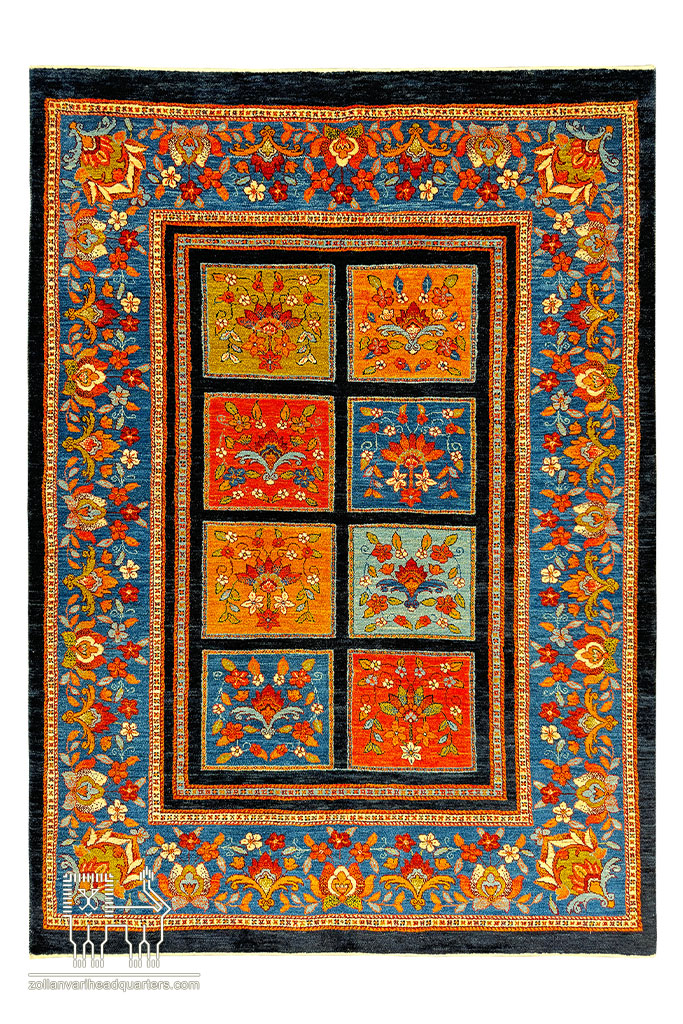Persian Carpet: A Deep-rooted and Authentic Art
The relationship between Iranians and carpets, whether urban or rural, is a profound and historical connection deeply rooted in the culture and traditions of this land. Persian carpets are more than just simple coverings for the floor; they symbolize beauty, art, and human taste. These handwoven works of art are not only decorative elements in homes and open spaces but are also recognized as symbols of cultural and social identity for each region. Skilled and talented weavers carefully and patiently create unique patterns and designs, each telling its own story. Persian carpets, with their variety of colors and patterns, are like living paintings that captivate the eyes and invite us into the world of imagination and art. These handcrafted arts are the result of hours of effort and dedication by individuals who, with love and passion, weave the warp and weft together, thus leaving a precious heritage for future generations. Each carpet represents a culture, a memory, and a life embedded in its fibers. In the following article from the Zollanvari website, we will introduce you to these carpets in more detail.
Variety of Carpets and Their Different Classifications
Throughout history, Persian carpets have been produced not only as beautiful art but also as practical tools to meet consumption and commercial needs in various parts of the country, a trend that continues today. Each region of Iran, based on various factors such as culture, customs, usage, raw materials, weaving patterns, dyeing processes, and climatic and geographical features, has developed a unique identity, which is recognized as a symbol of the authenticity of the carpets from that area. The classification of Persian carpets can be divided into two main categories: firstly, based on the characteristics of the settlement, into urban, rural, and nomadic groups, each with similar general traits, and secondly, based on geographical divisions and their similarities. Major carpet weaving regions include Azerbaijan, Isfahan, Khorasan, Kerman, Chaharmahal and Bakhtiari, as well as cities such as Kashan, Arak, and Hamadan, each of which has its own distinct characteristics. This study analyzes and introduces the unique features of each region and the different styles of Persian carpets through library research.

Urban and Rural Carpets
Differences and Similarities between Urban and Rural Carpets
The differences between urban and rural carpets can be summarized as follows:
- Urban carpets refer to those woven in urban environments, while rural carpets are woven by artisans in smaller, rural settings.
- Although the variety of patterns in both groups is almost the same due to technological advancements, rural carpets show greater variety in colors because of the use of natural and organic dyes.
- In rural carpets, the likelihood of weaving errors is higher due to the lack of precise patterns used in urban carpets. Regarding price, both types of carpets can be expensive, but rural carpets are usually woven from natural fibers such as sheep and goat wool, while urban carpets may also use silk fibers.
- Finally, the durability of the carpets is high due to the use of hand knots in both types, but factors such as maintenance and usage conditions can affect their longevity.
Final Words
The Persian carpet is a symbol of the beauty and deep culture of the Iranian people, transcending its function as a mere covering for the floor. Each carpet tells a unique story and is recognized as a symbol of the cultural and social identity of its region. Persian carpets are generally classified into urban and rural categories. Each region of Iran has its own distinctive features in carpet production, adding to the richness of this art. You can find a different and diverse world of these carpets in our collection. So, be sure to visit our website and check out our products.


Write a Comment